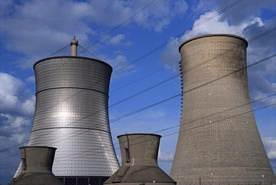Or in its bowels. For example, in many underdeveloped countries, wood is burned for heating and lighting homes, while in developed countries, various fossil fuels are burned to generate electricity -,. Fossil fuels are non-renewable energy sources. It is impossible to restore their reserves. Scientists are now exploring the possibilities of using inexhaustible sources of energy.
Fossil fuels
Coal and gas are non-renewable energy sources that were formed from the remains of ancient plants and animals that lived on Earth millions of years ago (for more details, see the article ““). These fuels are mined and burned to generate electricity. However, the use of fossil fuels poses serious problems. At current consumption rates, known oil and gas reserves will be depleted in the next 50 years. Coal reserves will last for 250 years. When these fuels are burned, gases are formed, under the influence of which there is a greenhouse effect and acid rain falls.
Renewable energy sources
As the population grows (see article "") people need more and more energy, and many countries are switching to the use of renewable energy sources - sun, wind, etc. The idea of their use is very popular, since they are environmentally friendly sources, the use of which does not harm the environment.
 Hydroelectric power plants
Hydroelectric power plants
The energy of water has been used for many centuries. Water spun water wheels used for various purposes. Today, huge dams and reservoirs have been built, and water is used to generate electricity. The flow of the river turns the wheels of the turbines, converting the energy of the water into electricity. The turbine is connected to a generator that generates electricity.
 The earth receives an enormous amount. Modern technology allows scientists to develop new methods of using solar energy. The world's largest solar power plant was built in the California desert. It fully meets the energy needs of 2,000 homes. Mirrors reflect the sun's rays, directing them into a central water boiler. The water in it boils and turns into steam, which rotates a turbine connected to an electric generator.
The earth receives an enormous amount. Modern technology allows scientists to develop new methods of using solar energy. The world's largest solar power plant was built in the California desert. It fully meets the energy needs of 2,000 homes. Mirrors reflect the sun's rays, directing them into a central water boiler. The water in it boils and turns into steam, which rotates a turbine connected to an electric generator.
Wind energy has been used by humans for thousands of years. The wind blew the sails and turned the mills. To use wind energy, a wide variety of devices were created, designed for generating electricity and for other purposes. The wind rotates the blades of the windmill, which drive the shaft of a turbine connected to an electric generator.
 Atomic energy - thermal energy released during the decay of the smallest particles of matter -. The main fuel for obtaining atomic energy is - contained in the earth's crust. Many people regard nuclear energy as the energy of the future, but its practical application creates a number of serious problems. Nuclear power plants do not emit poisonous gases, but they can create a lot of difficulties, since this fuel is radioactive. It emits radiation that kills everything. If radiation gets into or into the soil, it has catastrophic consequences.
Atomic energy - thermal energy released during the decay of the smallest particles of matter -. The main fuel for obtaining atomic energy is - contained in the earth's crust. Many people regard nuclear energy as the energy of the future, but its practical application creates a number of serious problems. Nuclear power plants do not emit poisonous gases, but they can create a lot of difficulties, since this fuel is radioactive. It emits radiation that kills everything. If radiation gets into or into the soil, it has catastrophic consequences.
Nuclear reactor accidents and the release of radioactive substances into the atmosphere pose a great danger. The accident at the nuclear power plant in Chernobyl (Ukraine), which happened in 1986, resulted in the death of many people and the contamination of a vast territory. Radioactive waste has threatened all living things for millennia. Usually they are buried not at the bottom of the seas, but there are frequent cases of burial of waste deep underground.
Other renewable energy sources
In the future, people will be able to use many different natural sources of energy. For example, in volcanic regions, a technology is being developed to use geothermal energy (the heat of the earth's interior). Another source of energy is biogas from waste decay. It can be used for home heating and water heating. Tidal power plants have already been created. Dams are often erected across river mouths (estuaries). Special turbines, powered by ebb and flow, generate electricity.
How to make a Savonia rotor:
The Savonia rotor is a mechanism used by farmers in Asia and Africa to supply water for irrigation. To make your own rotor, you need several thumbtacks, a large plastic bottle, a lid, two spacers, a 1m long and 5mm thick rod, and two metal rings.
How to do it:
1. To make blades, cut the top off the bottle and cut it in half lengthwise.
2. Using the thumbtacks, attach the bottle halves to the cap. Be careful when handling buttons.
3. Glue the gaskets to the cover and insert the rod into it.
4. Screw the rings onto a wooden base and place your rotor in the wind. Insert the rod into the rings and check the rotation of the rotor. Having chosen the optimal position of the half of the bottle, glue them to the lid with durable water-repellent glue.




